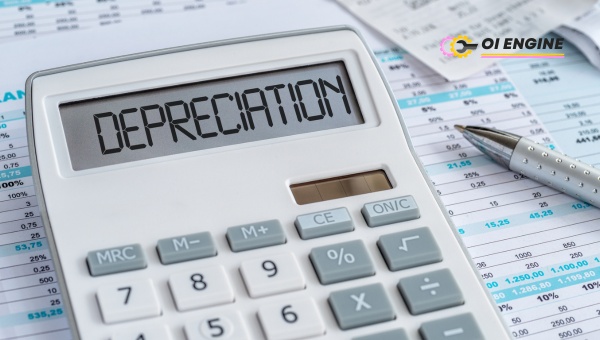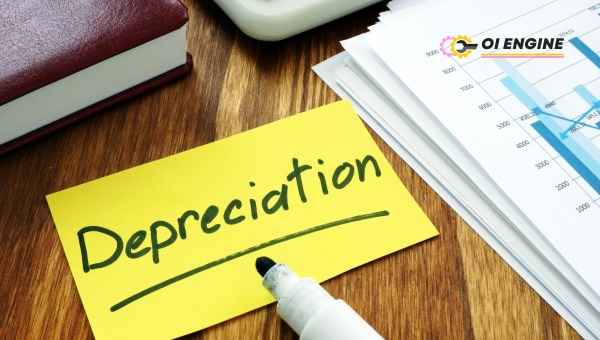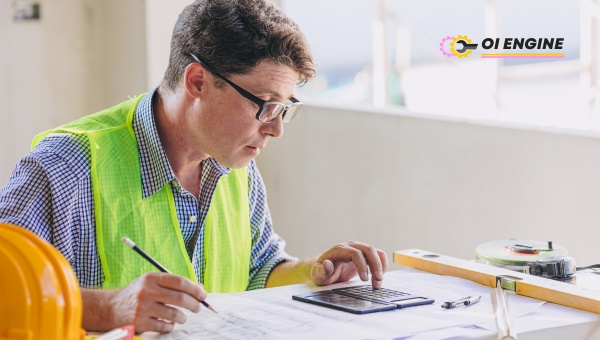When I think about the things businesses need to keep an eye on, calculating depreciation cost always jumps out at me.
It might sound like just another financial term, but trust me, it’s a bigger deal than you might first think. Have you ever wondered how companies keep track of their stuff getting older and less valuable?
That’s right, we’re talking about depreciation costs. And let me tell you, if you’re running a business or dealing with finances in any way, this is something you’ve got to get right!
Calculating depreciation cost isn’t just about some basic math – it’s an important part of managing your assets smartly. It means how much money you take off an item’s value over time because it’s getting worn out or outdated.
Think of the car that loses value when it leaves the lot – same idea! Businesses can make smarter decisions and even save on taxes by knowing this cost.
Understanding Depreciation Cost
When I buy something big and important for my work, like a machine or a car, it doesn’t stay new forever. Over time, it gets old and not as good as it was.

This drop in value is what we call depreciation cost. Now, let’s dive deeper into what this means and why it’s so important to keep track of.
What is Depreciation Cost?
Depreciation cost is the decrease in the value of an item over time. Let’s say I buy a new computer for my office.
It’s worth quite a bit when I first buy it, but as years go by, that computer isn’t worth as much because there are newer ones out there.
This reduction in price from what I paid to what it’s worth now is the depreciation cost. It shows me how much the value has gone down every year since I bought it.
Importance of Calculating Depreciation Cost
It’s super important for me to calculate depreciation cost for several reasons:
- Tracking Value: First off, keeping an eye on how much my things are worth over time helps me understand how long they will be useful for me.
- Tax Purposes: For taxes, knowing depreciation is key because oftentimes the government lets businesses reduce their taxable income based on how much their stuff has depreciated.
- Making Smart Choices: If I know my equipment well enough to predict when it’ll be too old to use, then I can plan better for buying new stuff without being suddenly broken or caught off guard.
- Understanding Earnings: Lastly, calculating depreciation helps me figure out if my business is truly making money or just pretending by holding onto old items that aren’t helping make profits anymore.
Taking these points seriously and staying organized with our records and calculations can help us make wiser decisions in both short-term spending and long-term financial planning.
Calculating Depreciation Cost: Step By Step Guide
Depreciation cost is a way to spread the price of an asset over its useful life. To get this done right, there’s a step-by-step guide one should follow.

It starts with knowing what you have, figuring out how fast it loses value, and then choosing the best way to record this loss over time. This makes sure you understand how much your things can make for you and when they might need replacing.
Identification of Assets
The first thing I do when calculating depreciation cost is identify which assets should have their value spread out. These are typically items with long-term use, like cars or computers. Here’s what I look for:
- Items that can be used for more than one year
- Big things that were pricey to get
- Bits and pieces important for my day-to-day business
When I find these items, I list them down clearly so I’m sure not to miss anything.
Identifying assets isn’t hard once you know what to look for. It’s like taking inventory but focusing on their future use rather than their presence now.
So, I pay attention to items that aren’t expected to stick around forever because they wear out or technology changes too fast.
Determining Depreciation Rate
Deciding the rate at which things lose their worth is key in calculating depreciation cost properly. The rate says how much of an asset’s value falls each year until it has no financial value left in my books. Two core factors play into setting this rate:
- Expected lifetime: How many years will the item be useful?
- Residual value: What can it sell for when it’s old?
To figure these out, either company policy steps or industry standards give me a push in the right direction.
The rates should tie closely with reality – no guesswork! If something tends to become useless faster due to tech advancements (like laptops), then its rate would be higher compared with furniture which lasts longer before feeling dated.
Application of the Correct Depreciation Method
Now comes selecting the method that fits best; there are several ways but here’s where I look at just three common ones:
When applying these methods, here’s what sticks out:
- The Straight-Line Method is like a uniform march – equal yearly drops.
- Declining Balance Method speeds up early on – kind of taking bigger bites at first.
- The units of the Production Method tie closely with actual wear-and-tear – matching up dips with usage levels.
Each method carries its logic and suits different scenarios: from stable costs throughout (straight-line), cushioning initial investment impacts (declining balance), or syncing up expenses directly with how much work gets done (units produced). You’ve got choices; just mix and match wisely!
Knowing which method goes where opens up options while keeping records straight — meaning less stress comes tax time or when checking how well investments keep performing year on year.
Common Methods for Calculating Depreciation Cost
Calculating depreciation cost is a key part of managing business finances. It is the way to figure out how much the value of an asset goes down over time.

There are a few common ways to do this: the straight-line method, declining balance method, and units of production method. Each one has its process and fits different kinds of assets.
Straight-Line Method
The straight-line method is the simplest way to calculate depreciation cost. With this method, I take the total cost of an asset and spread it out evenly over its useful life. Here’s how it works:
- Find out the initial cost of an item – this includes what I paid for it plus any money spent to get it ready to use.
- Subtract any salvage value – this means what I think it will be worth after I can’t use it anymore.
- Divide that number by how many years I plan to use the item – that gives me a yearly depreciation cost.
So, let’s say I bought a printer for my office for $1,000 and I think it’ll last me five years before it’s too old or broken to use but could still sell for $100 as scrap parts. The math would look like this: ($1,000 – $100) / 5 years = $180 per year in depreciation cost.
Declining Balance Method
The declining balance method is different from straight-line because instead of spreading the cost evenly over time, more depreciation happens in the early years after buying an asset and less as time goes on.
Here’s how you do it:
- Choose a rate—usually double what a straight line would be.
- Apply that rate to your starting amount each year.
- Don’t forget about salvage value! Subtract that when your numbers start getting close so you don’t go below its ending worth.
For example: If my printer from earlier had a double-declining rate (so, twice 20% from a straight line = 40%), here’s what happens:
Year 1 Depreciation = 40% x $1000 = $400,
Year 2 Depreciation (after subtracting year one’s depr.) = 40% x ($1000-400) = $240,
and so on until hitting salvage value.
Units of Production Method
What if my assets’ worth drops based on how much work they do instead of just time? That’s where units of production come into play.
The first steps are:
- Guess the total amount of work (like miles driven or items made).
- Figure out depreciation per unit – divide total cost minus salvage by estimated total work.
So if my company truck costs me $20,000 and can drive about 200,000 miles with no worth left afterward:
Depreciation Per Mile=($20,000-0)/200000=$0.10/mile
This means every mile driven costs ten cents in value going down!
Each year I then look at miles driven times that ten cents figure—which adds up quickly! Say year one was heavy delivery loads at 50k miles; then that’d be:
50000 miles*$0.10/mile=resulting annual depreciation expense.
Impact on Financial Statements while Calculating Depreciation Cost
Calculating depreciation costs can significantly impact a company’s financial statements. While it may seem like just numbers on paper, the rippling effects of depreciation can profoundly alter the bottom line.

This, in turn, impacts how stakeholders view the company’s financial health. In particular, it primarily affects two core financial documents- the balance sheet and the profit & loss statement.
Influence on Balance Sheet
Depreciated costs have a direct influence on an organization’s balance sheet – a record that provides a snapshot of a business’s net worth at a specific point in time.
The balance sheet lists all assets: both current (those that will be used up or converted into cash within one year) and fixed assets such as equipment and infrastructure.
Now, consider you’ve bought machinery for your business. Over time, this machine wears out or gets outdated – shedding its value bit by bit each year. This wear and tear is what we call depreciation.
- Initially recorded as part of fixed assets.
- Each year’s depreciation expense decreases asset value.
- Accumulated depreciation increases over time showing total depreciation to date.
This gradual decrease is reflected in your balance sheet as “accumulated depreciation”, enhancing your view into how much value an asset has lost since its purchase or over any given period.
Furthermore, depreciation, while reducing asset values also indirectly impacts equity via retained earnings considering every Depreciation Expense reduces Net Income which eventually reduces Retained Earnings (part of Owner’s Equity).
Impact on Profit & Loss Statement
A profit & Loss Statement (P&L), also known as an income statement, details a company’s revenues, costs, expenses, and profits over a period.
It narrates the story of how much income was generated by strategic operations & secondary activities and where this money went in terms of various expenses resulting in a final figure known as Net Profit.
In the context of depreciation, let me break down how it works:
- Depreciation Expense is listed under operating costs.
- It’s a non-cash expense, meaning no actual cash is involved yet it reduces profits.
- Depreciation lowers taxable income thereby reducing taxes.
When an asset’s cost is proportionally distributed across its useful lifespan through depreciation, the associated expense hits your P&L Account every year.
No money changes hands when you record depreciation expenses, however, it does reduce your business profits before taxes and in turn slashes down the amount of taxes you owe.
This cascade effect can heavily influence cash flows and profit margins forcing you to be cognizant about managing them efficiently.
The implications of depreciation on balance sheets and profit & loss statements are vital not merely to sustain but to thrive in business ventures for they provide crucial insight into a company’s fiscal matters.
FAQs
How many years for truck depreciation?
Typically, trucks depreciate over roughly five to seven years. However, the time frame may alter based on the specific use and condition of the truck.
What is the average depreciation rate for a truck?
The average rate at which a truck depreciates can be around 20% per year; however, this percentage is generally higher in the first year of ownership.
Are trucks depreciating assets?
Yes, like any other physical or tangible assets such as equipment or buildings, trucks are indeed depreciating assets. Their value decreases over time due to wear and tear or obsolescence.
What is the depreciable life of an over-the-road truck?
An over-the-road (OTR) truck’s depreciable life on average can be around 10 to 15 years depending on its usage and maintained condition.
What is the useful life of a truck?
The useful life of a truck tends to vary greatly based on its type, quality, maintenance schedule, and intensity of use but typically ranges between 5 – 10 years.
Conclusion
In the modern financial ecosystem, calculating depreciation cost is a critical process I can’t overstate the importance of.
It’s more than just numbers; it plays an instrumental role in precise financial forecasting, accurate tax computations, and insightful business decision-making.
By identifying depreciable assets, and selecting a suitable rate and method of depreciation, its impact on balance sheets and profit & loss statements can be correctly assessed.
As shown by methods such as the Straight-Line Method, Declining Balance Method or Units of Production Method each has its benefits depending on the particular circumstances.
All considered understanding depreciation costs aids in successful management and growth strategies for businesses.
